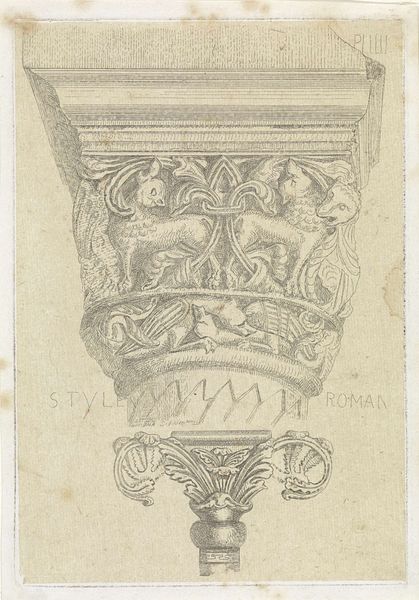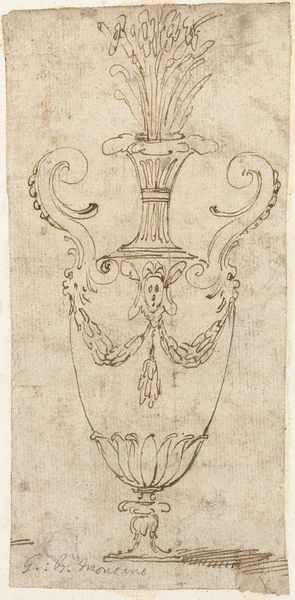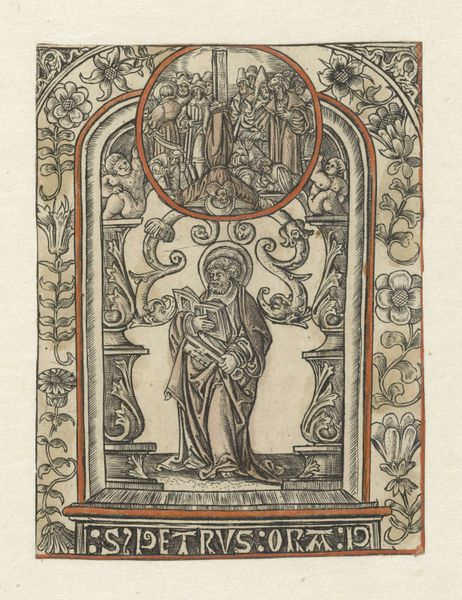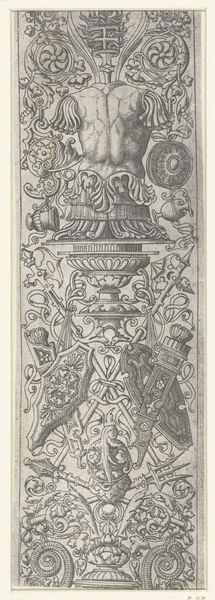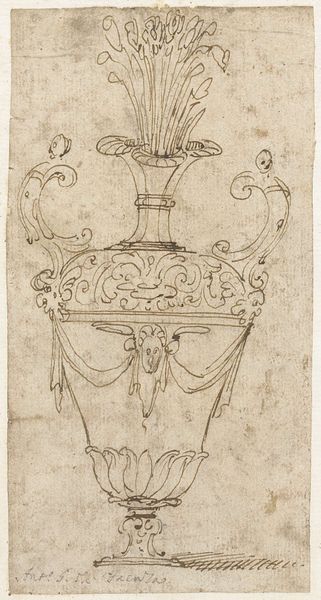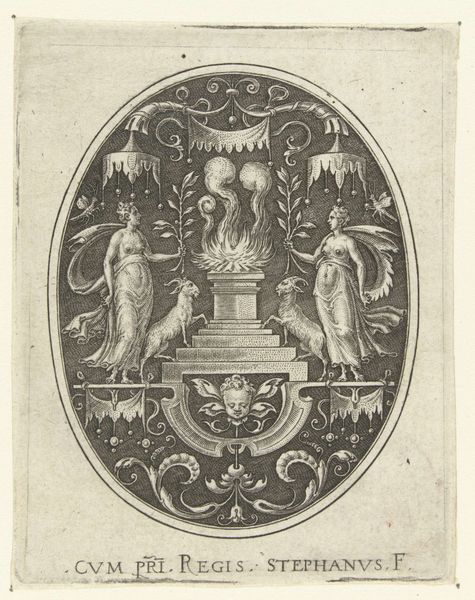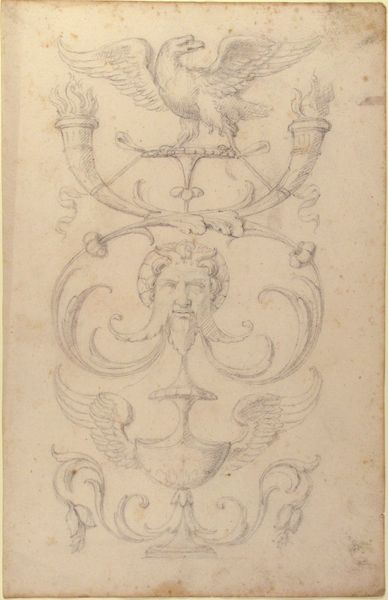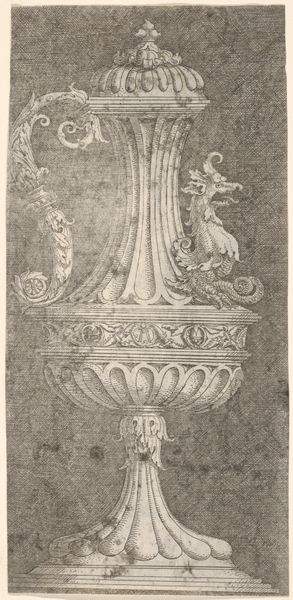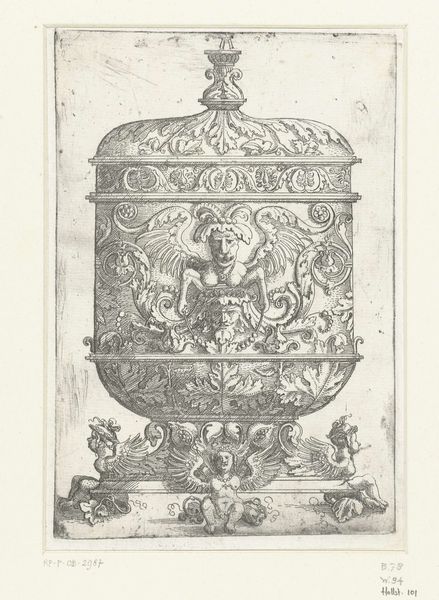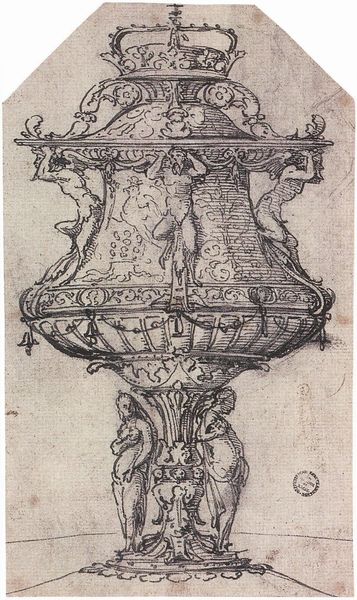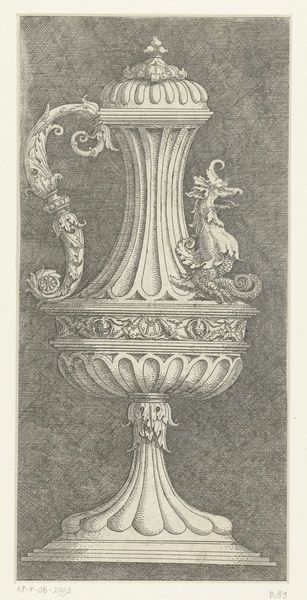
Decorative border panel with a flaming candelabra ornamented with shells, swags and heads of putti, from Life of the Virgin and Christ 1490 - 1500
0:00
0:00
drawing, print, pencil
#
portrait
#
drawing
# print
#
pencil sketch
#
old engraving style
#
figuration
#
pencil
#
line
#
italian-renaissance
Dimensions: Mount: 16 × 9 11/16 in. (40.6 × 24.6 cm) Sheet: 9 3/16 × 1 9/16 in. (23.3 × 4 cm)
Copyright: Public Domain
Editor: So, this intriguing piece is titled "Decorative border panel with a flaming candelabra ornamented with shells, swags and heads of putti, from Life of the Virgin and Christ," created between 1490 and 1500 by Francesco Rosselli. It’s currently housed in the Met. What strikes me immediately is the almost architectural quality of the rendering; it’s like a building elevation rendered in delicate lines. How do you interpret this work? Curator: Considering its time and intended function, let's not see this drawing in isolation. These decorative borders were part of the larger visual and socio-political machinery of the church. Rosselli's detailed design, meant to embellish religious narratives, contributed to a culture of visual spectacle intended to reinforce power and authority. The question isn't just "Is it beautiful?", but "What did this *do* in its context?" How did these images function within the public performance of religious devotion? Editor: That’s interesting. I hadn’t thought about the intended effect on a broader audience. I was really just caught up in the fine lines and the sheer amount of detail! So, are you suggesting the drawing's aesthetic qualities are almost secondary to its role as a tool of religious institution? Curator: Not necessarily secondary, but inextricably linked. The beauty is instrumental. The refinement and the intricacy of the design weren’t merely decorative; they were part of the strategy to impress upon viewers the grandeur and authority of the Church. Editor: That’s a fascinating point. It really shifts my perspective on how to appreciate the artwork. Curator: Exactly. Seeing the politics within imagery allows a deeper consideration than initial aesthetic judgments. Editor: This reframes the entire intention behind the piece and makes me want to reconsider the political influences behind everything I view. Curator: Precisely! It’s a vital process, even in art today.
Comments
No comments
Be the first to comment and join the conversation on the ultimate creative platform.

